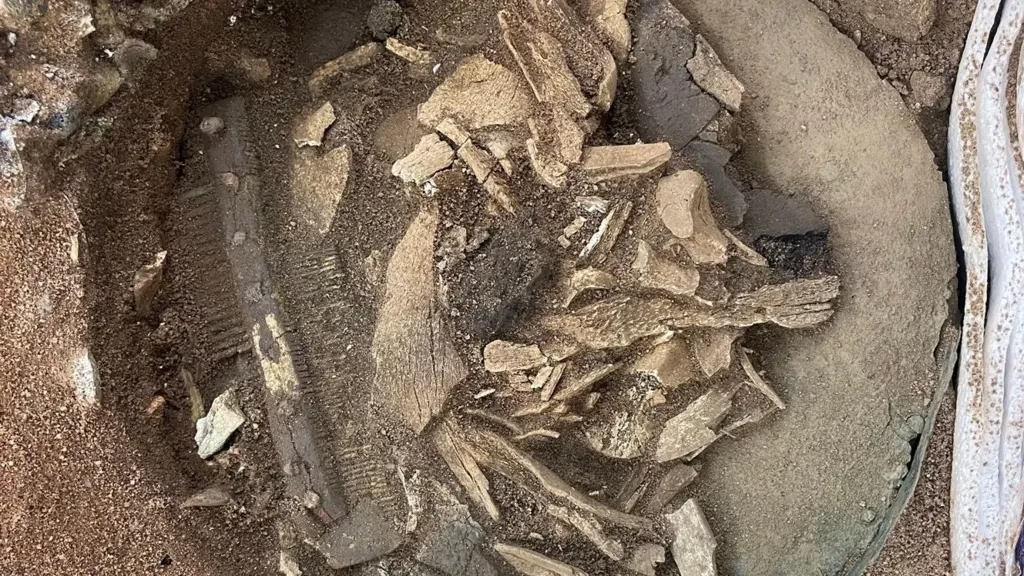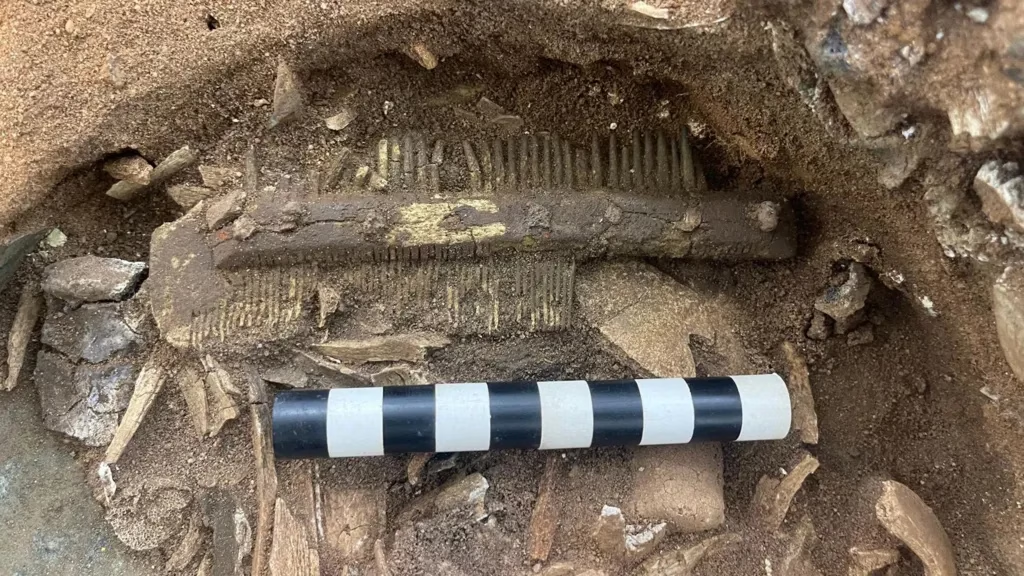New findings at one of Britain’s most mysterious archaeological sites suggest a rare bronze bucket may have held the cremated remains of an important figure.
Archaeologists working at the legendary Sutton Hoo burial site in Suffolk have made a groundbreaking discovery: a 6th-century Byzantine bucket, long thought to be a luxury item, may actually have served as a cremation vessel for a high-status individual.
This revelation adds a fascinating new layer to the story of Sutton Hoo — a site famous for its ship burials, horse sacrifices, and lavish funerary traditions linked to the early Anglo-Saxon elite.
Human and animal remains found in the bucket
According to National Trust archaeologist Angus Wainwright, the base of the reconstructed bucket contained cremated human bones, including parts of a skull and an ankle. The remains were found alongside animal bones, believed to be from a creature larger than a pig — possibly a horse, which was often included in high-status burials during the Anglo-Saxon period.

Although the individual’s gender could not be determined, hopes remain high that ancient DNA might be recovered from an unburnt comb discovered nearby.
A cultural crossroads in early medieval Britain
The ornate bucket — decorated with hunting scenes — is thought to have been imported from the Byzantine Empire decades before the famous Sutton Hoo ship burial. Dr. Helen Geake, an Anglo-Saxon expert with Time Team, described the find as
“a remarkable fusion of southern classical craftsmanship and northern Germanic burial tradition.”
She added,
“It perfectly captures the strangeness of Sutton Hoo — a place of ship burials, horse burials, and now, bath-bucket burials. Who knows what secrets still lie beneath?”
Conservation and analysis underway
Both the bucket base and the comb are now undergoing careful conservation for further study. Researchers hope to learn more about the person buried and the cultural significance of such an unusual funerary object.

This unexpected use of a high-status imported item — possibly a gift or trade object from the Byzantine world — hints at Sutton Hoo’s role as a cosmopolitan center of elite exchange during early medieval times.
A 6th-century bronze bucket decorated with a hunting scene, uncovered during excavations at Sutton Hoo. Archaeologists believe this rare artifact may have been used as a cremation vessel.
Image Credit: David Brunetti / National Trust





